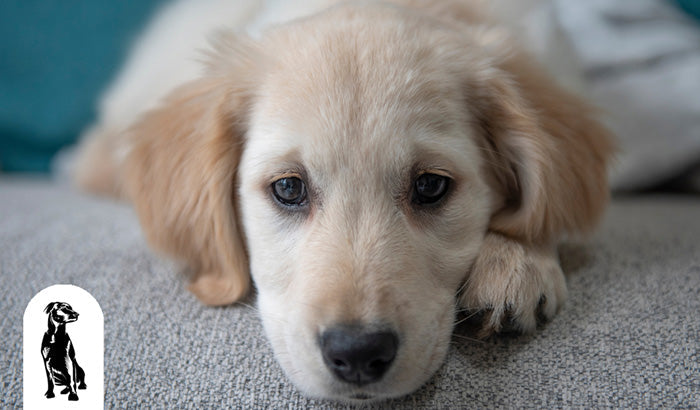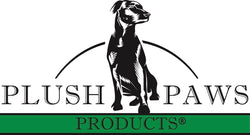
As a dog owner, witnessing your furry companion struggle with separation anxiety is a poignant and often heart-wrenching experience. This complex emotional issue is far more than a simple behavioral problem; it's a deep-seated response rooted in the canine psyche.
Dogs, by their nature, are pack animals, and being separated from their human 'pack' might trigger intense feelings of fear and vulnerability. This condition vividly reminds them of their instinctual need for companionship and security.
Understanding and managing this anxiety is a multifaceted challenge that demands patience, compassion, and a nuanced approach. It involves deciphering the subtle language of your dog's behavior and recognizing the difference between ordinary and anxiety-driven actions.
For instance, is a chewed-up shoe a mere sign of boredom or an expression of more profound distress? Identifying these signs is crucial in addressing the real issue at hand.
Our comprehensive guide delves into the causes and symptoms of separation anxiety, offering a wealth of effective strategies to help your beloved pet. We explore everything from the environmental factors contributing to anxiety, to behavior modification techniques, and adjustments in routine, which can provide comfort and reassurance for your anxious dog.
With a blend of understanding and actionable advice, this guide aims to empower you to ease your dog's anxiety, strengthening the bond you share and enhancing their overall well-being.

What is dog separation anxiety?
Separation anxiety in dogs is a state of distress and fear they experience when they're left alone or separated from their favorite person. It's not merely a sign of boredom or mischief; it's a serious condition that could significantly impact their mental and physical health.
Identifying separation anxiety in dogs
Recognizing separation anxiety in dogs involves observing behaviors that are out of the ordinary. These include excessive barking, whining, pacing, destructive behavior, and even attempts to escape. Some dogs might also show signs of depression or lethargy when they know you're about to leave.
Causes of separation anxiety
The roots of separation anxiety in dogs are varied. It can stem from a change in routine, a traumatic event, or even genetics. Dogs that have been rehomed or have experienced loss are particularly susceptible to this condition.
The impact on your dog
Separation anxiety takes a toll on your dog's overall well-being. Physically, it leads to self-injury, loss of appetite, and gastrointestinal issues. Emotionally, it leaves your dog feeling insecure and stressed.
Creating a safe space
One of the first steps in managing separation anxiety is to create a safe and comforting space for your dog. This could be a crate or a specific area where they feel secure in your home. Include their favorite toys and a piece of clothing with your scent to provide comfort.
Gradual desensitization
Gradual desensitization involves slowly exposing your dog to being alone for short periods and gradually increasing the duration. This technique helps them understand that being alone is not something to fear.
Counterconditioning
Counterconditioning is about changing your dog's response to being alone. This involves associating your departure with something positive, like a treat or a favorite toy. It's about turning a negative experience into a positive one.
Exercise and mental stimulation
A well-exercised dog is generally more relaxed and happy. Before leaving, engage your dog in physical activity and mental games. This not only tires them out but also keeps their mind stimulated.
Routine and predictability
Dogs thrive on routine. Establishing a consistent schedule for meals, walks, and playtime provides a sense of security and predictability for your dog, reducing anxiety.
Avoiding over-attachment
While it's natural to want to spend every moment with your dog, this sometimes contributes to separation anxiety. Encourage independence by allowing your dog to spend time alone comfortably while you are home.
Professional training and behavior modification
In some cases, professional help might be needed. A dog trainer or behaviorist can offer personalized strategies and training techniques to manage separation anxiety effectively.

Medication and supplements
In severe cases, veterinarians might recommend medication or natural supplements to help ease anxiety. These should always be used in conjunction with behavioral strategies.
Leaving and returning home
How you leave and return home can impact your dog's anxiety. Avoid dramatic goodbyes and greetings. Keep these moments low-key to reduce the contrast between your presence and absence.
Socialization and interaction
Socialization plays a vital role in reducing anxiety. Regular interaction with other dogs and people builds confidence and reduces fear and anxiety in different situations.
The power of calming aids
Calming aids such as pheromone diffusers, anxiety wraps, and calming music can provide additional comfort to dogs dealing with separation anxiety.
Regular veterinary check-ups
At times, behaviors attributed to separation anxiety may actually indicate underlying health issues in your dog. Regular veterinary examinations are key to identifying and addressing hidden medical conditions.
These check-ups provide an opportunity to discuss behavioral concerns and determine if they stem from physical ailments. Proactive veterinary care is essential in distinguishing between your pet's emotional distress and health-related problems.
Patience and consistency
Managing your dog's separation anxiety is a gradual process that requires abundant patience, unwavering consistency, and a deep understanding from you, the owner. Every small victory, whether it's your dog staying calm a bit longer or engaging with a toy in your absence, is a significant step forward and deserves recognition and celebration.
Keeping a positive attitude is crucial, as dogs are highly sensitive to their owner's emotions, and a positive demeanor can significantly influence the success of managing their anxiety.
In wrapping up our exploration of managing your dog's separation anxiety, it's important to reflect on the journey we've embarked upon together. This journey is more than a series of steps to alleviate a behavioral condition; it's a testament to our deep and enduring bond with our canine companions.
The path to understanding and addressing separation anxiety is filled with insights into the emotional world of our pets, highlighting the depth of empathy and connection possible between humans and dogs.
As you apply the strategies and insights from this guide, remember that each day brings new opportunities for growth and understanding. You're not merely teaching your dog to cope with being alone; you're also learning about their unique personality, their needs, and how the world looks from their eyes. This process can deepen your relationship, building a foundation of trust and mutual respect that goes beyond the immediate challenge of separation anxiety.
This experience offers a valuable chance for personal growth. Tackling your dog's anxiety challenges your patience, creativity, and problem-solving skills. It's a journey that can be as rewarding for you as it is for your pet. You might find yourself more attuned to the nuances of canine behavior, more empathetic towards the emotional needs of animals, and more knowledgeable about the fascinating world of dog psychology.
As you continue on this path, remember to be kind to yourself and your dog. There will be setbacks and successes; each is part of the learning process. The goal isn't to 'fix' a behavior but to create a happier, healthier environment for your beloved pet. It's about building a life together where both of you feel secure, understood, and loved.

Try to remember to consider the broader impact of your efforts. By addressing your dog's separation anxiety, you're contributing to a more compassionate world. You become a part of a community of pet owners committed to understanding and meeting the emotional needs of their animals. Your experiences and successes might inspire and assist others facing similar challenges, creating a ripple effect of empathy and knowledge.
Managing your dog's separation anxiety is a multifaceted experience that extends beyond the immediate objective of reducing their stress. It's about nurturing a relationship built on understanding, patience, and unconditional love. As you move forward, cherish this journey and its many lessons, for they are the threads that weave the rich tapestry of life shared with our canine companions.
Ease your dog’s anxiety on an adventure with Plush Paws!
Incorporating regular adventures into your dog's routine is an effective strategy for managing and preventing anxiety symptoms. Engaging your fluffy friend in diverse activities provides essential physical exercise and keeps their minds actively engaged, which is crucial for their overall mental health and well-being.
Whether visiting a bustling dog park, a peaceful hike on a scenic trail, or a simple trip to the pet store for special treats, these experiences may significantly reduce your dog’s anxiety levels.
Understanding the importance of these adventures, we at Plush Paws have designed premium car seat covers that ensure comfort for your dog and protection for your vehicle.
Our high-quality covers are crafted to create a cozy and safe space for your best friend during travel. Whether you're heading out for a long drive to explore new places or a short trip to the local park, our covers make these journeys more enjoyable and stress-free for you and your pet.
Additionally, our range of car seat covers not only safeguards your vehicle’s interior from dirt, fur, and wear but also adds an element of style and luxury to your travels. We believe that your dog's comfort and safety are paramount, and our products reflect this commitment.
To explore our collection and find the perfect match for your needs, visit our site today. If you have any queries or need assistance selecting the right product for your canine companion, our friendly and knowledgeable team is always here to help. Contact us today, and take the first step towards enriching your dog’s life with enjoyable, anxiety-free adventures.
